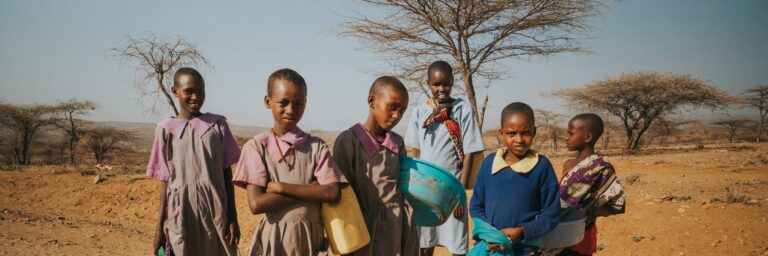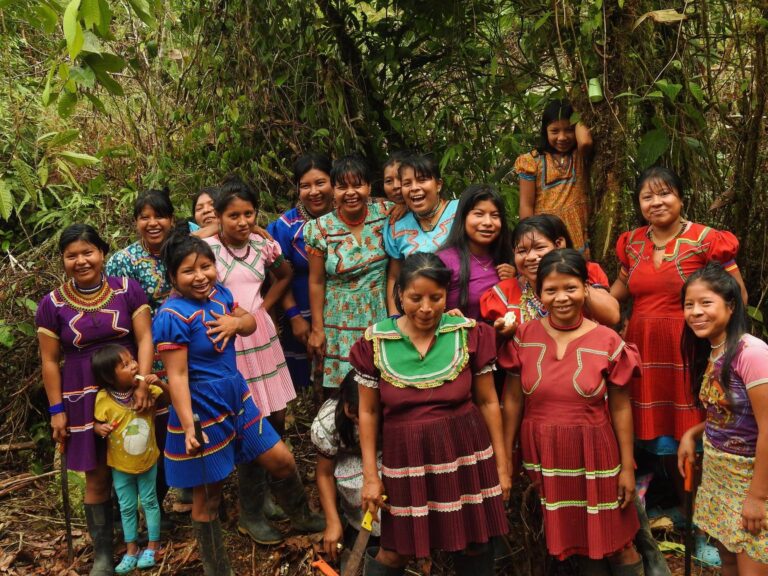
Dried up Futures: Drought and Desertification
Drought and desertification are the worst environmental crises facing the world today. Our new report Dried Up Futures examines how these interconnected disasters are driven by population growth, and the urgent need to act now to save our future.
Only if we understand, will we care. Only if we care, will we help. Only if we help, shall all be saved.”
Dame Jane Goodall, Population Matters Patron
Our new report: Dried Up Futures: How population growth is driving drought, land degradation, and desertification, examines how drought, land degradation, and desertification are driven by population growth and the urgent need to tackle these crises with a holistic Population Health Environment (PHE) approach that puts women and girls at the forefront of solutions.
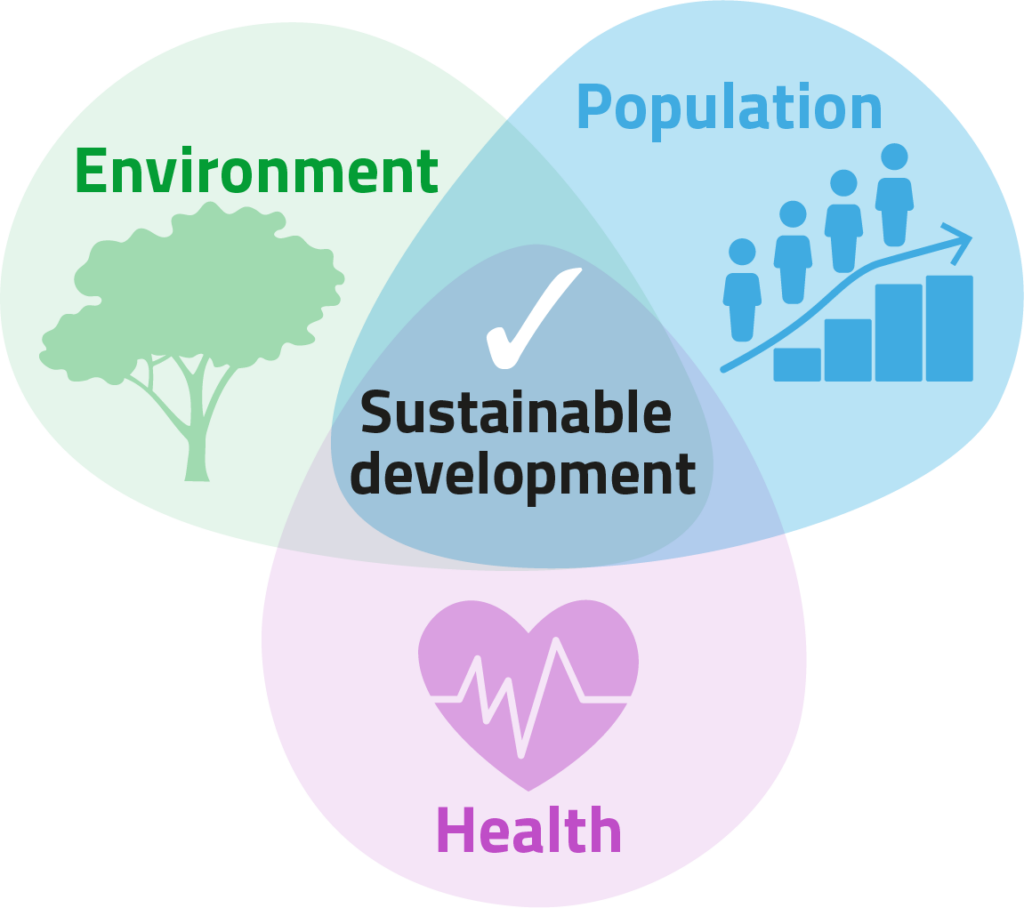
Support our campaign to raise PHE up the agenda here.
Interconnected Crises
We live in a world where no other set of hazards claims more lives and causes more economic losses, than drought, land degradation, and desertification. All three of these environmental crises exist within a complex cycle, that shapes the lives of billions of people worldwide.
Since 1970, the global human population has increased from 3.7 billion to now over 8 billion in 2024. Unsustainable demand, due to population growth and rising per capita consumption, has strained the earth’s water and land systems, and accelerated drought and land degradation.
Current UN projections are for a population of 10.4 billion in 2100, with a 95% certainty range of 8.9 – 12.4 billion. All these extra billions of people will require more land, more food, and more water, all natural resources at risk of scarcity in some areas due to drought and desertification.
Nothing in nature can survive unlimited growth. Nothing in nature exists independently. Everything is interconnected and we are starting to realize this only now. We are not separated from nature, but are an integral part of this fragile web that evolved over millennia.”
2023 Global Drought Snapshot

DROUGHT – The Silent Crisis
Unlike dramatic wildfires or floods, droughts don’t dominate news coverage, instead they have been described as “misery in slow motion”. The Horn of Africa has been devastated by drought since 2020, affecting 100 million people in the region.
The principal cause of drought is low rainfall over an extended period. Droughts are made worse by climate change, deforestation, urbanisation, and groundwater depletion, all driven by population growth and our unsustainable demand for resources.
This World Bank map identifies the areas at highest risk of drought, it overlays projected population growth with the future availability of water in 2050.
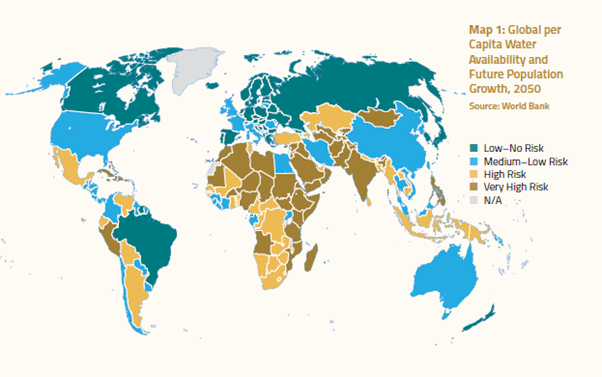
It illustrates that the regions with the highest rates of population growth will be at the highest risk of drought.
Drought is one of the most expensive natural disasters. In the past 50 years, drought-related hazards have led to economic losses of over 70 billion USD in Africa.
Droughts devastate whole communities but disproportionately impact women and girls. In rural Africa, female infants born during severe droughts will grow up physically shorter, receive less education, and ultimately become less wealthy.
In Ethiopia, rates of child marriage rose by 119 per cent in 2022 in areas worst impacted by drought. Child marriages violate girls’ rights, placing them at higher risk of violence and exploitation. Child marriages also cause high fertility rates and population growth in low and middle-income countries.
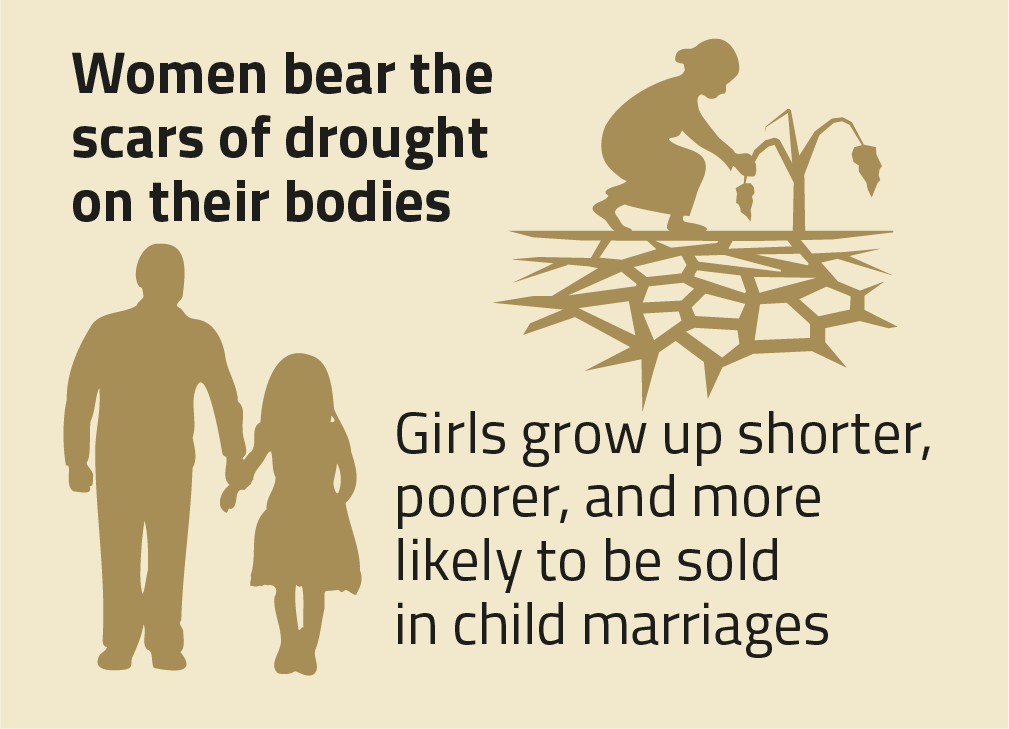
Dried Up Futures emphasises that empowering women and girls is one of the most effective solutions to curb population growth and combat future droughts.
LAND DEGRADATION – No Land, No Life
Land is one of the most valuable resources upon which we depend for our food and our shelter. However, due to humanity’s rapid expansion and cultivation of land, the resource upon which we depend is increasingly degraded.
The UN’s Global Land Outlook 2022 suggests that 20-40 per cent of the earth’s land is in a degraded condition, with 100 million hectares of productive land lost annually.
Since agriculture began, land degradation has followed, and accelerated as agriculture has expanded and intensified to meet the rising demand of our growing population. Unsustainable agricultural practices: overgrazing, deforestation, artificial fertiliser and pesticides, causes land degradation.
It’s been estimated we would need to scale up food production by 70 per cent (UN FAO) to meet future demand. Whilst technological breakthroughs may improve agricultural efficiency with reduced environmental impacts, they would be limited by scale if continued population growth drives unsustainable demand.
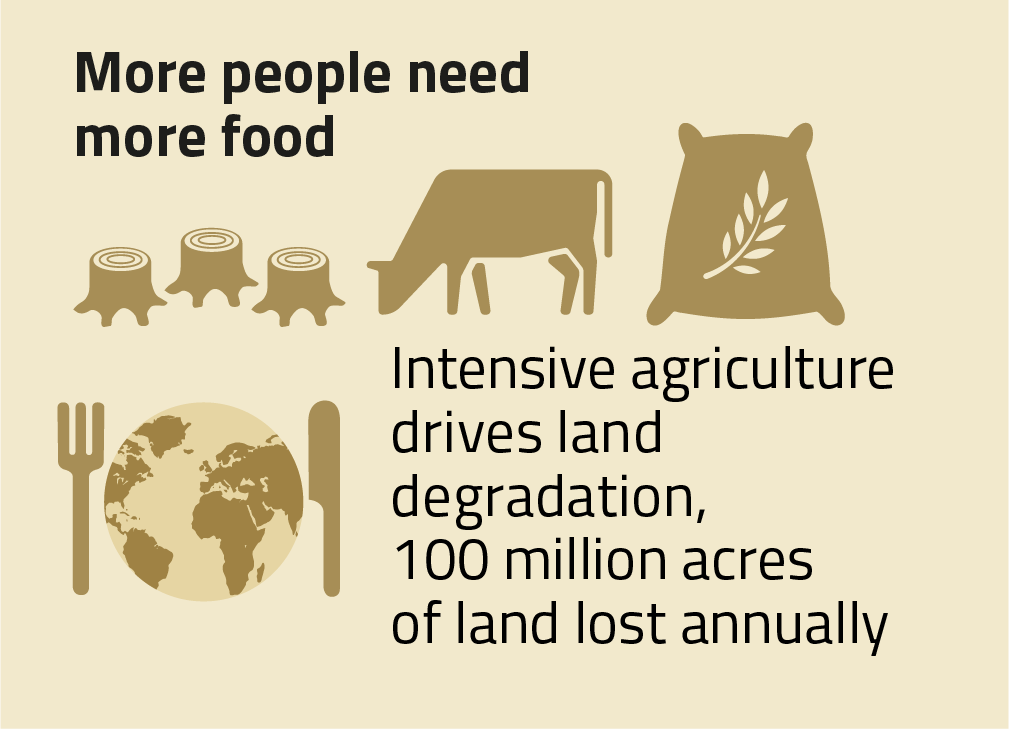
Whilst disparity in resource consumption reflects global inequality, with 282 million people experiencing high levels of food insecurity, whilst food waste and obesity present problems in the Global North.
To address this inequality, we must focus on social and environmental justice, through ending our overconsumption in the Global North and curbing global population growth to reduce demand.
DESERTIFICATION – Drylands to Deadlands
Drylands are found in five of the world’s continents and are home to over 3 billion people.
People have lived on drylands for thousands of years, with indigenous knowledge passed down generations to ensure communities live in harmony with these ecosystems. However, in recent decades, climate change alongside rapid population growth has tipped the ecological balance, placing greater pressure on drylands, and triggered the process of desertification.
Desertification does not mean desert expansion, it’s land degradation that occurs on drylands. 46 out of the 54 African countries are vulnerable to desertification. In Asia, desertification has affected 38 out of 48 countries.
While less than 10 per cent of drylands are undergoing desertification, these areas have experienced the most rapid population growth, the population having increased from approximately 172 million in 1950 to over 630 million today.
Rapid population growth in drylands has meant traditional pastoral techniques have been replaced by intensive agriculture to meet demand, which has resulted in overgrazing and soil erosion, causing desertification.
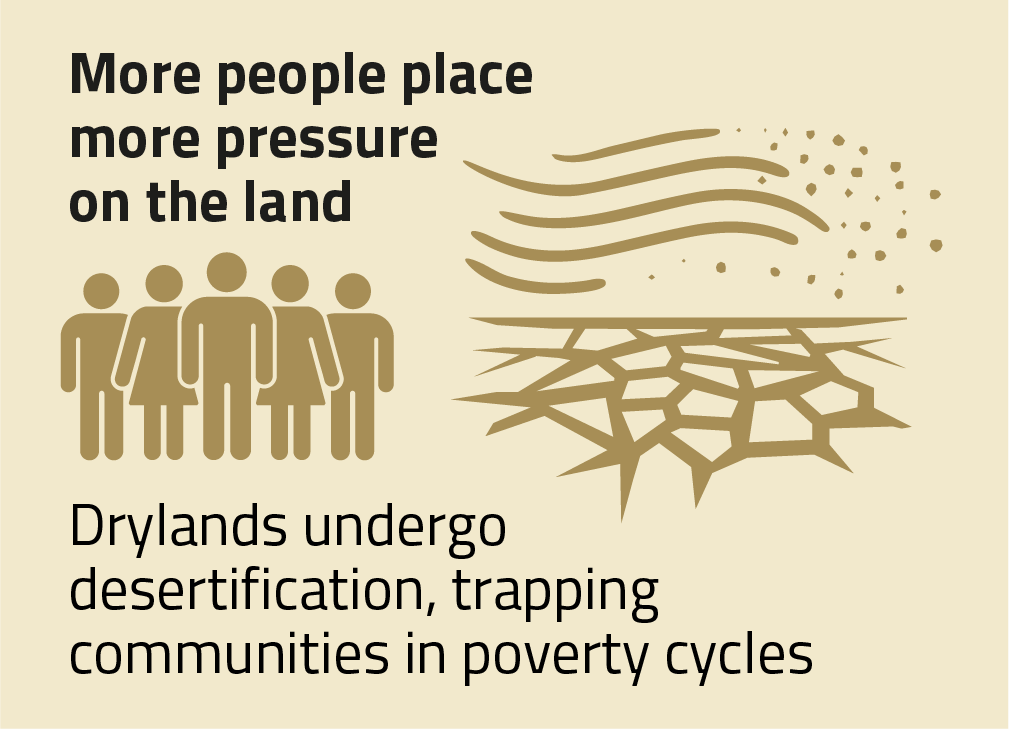
Desertification syndrome is a term used to describe the negative cycle linking desertification and poverty. Wherein dryland populations apply unsustainable agricultural practices to meet demand, leading to desertification, crop failure, and food insecurity. Desertification ruins agricultural livelihoods and increases rates of poverty, subsequently limiting the capacity of the community to invest in more sustainable land management, continuing the cycle of desertification.
In dryland areas of Sub-Saharan Africa and South Asia, 41 and 12 per cent of the total populations live in extreme poverty. Many of these communities lack access to safe, modern contraception, resulting in rapid population growth in these areas. The population in drylands is projected to increase twice as rapidly as non-dryland areas and is projected to reach 4 billion by 2050.
More people will place more pressure on the land, accelerating desertification.
PHE projects that integrate choice-based family planning programs, alongside education on sustainable land management, can reduce local population pressure on drylands and prevent desertification.
SOLUTIONS – Support PHE
To tackle interconnected issues such as drought, land degradation and desertification, it’s important to utilise a holistic approach that can break down the vicious cycle wherein one crisis worsens the other. Population Health Environment (PHE) is a holistic approach, that improves access to safe, modern contraception in remote areas, alongside educating communities on how to sustainably manage natural resources, acting as an effective preventative approach to drought, land degradation, and desertification.
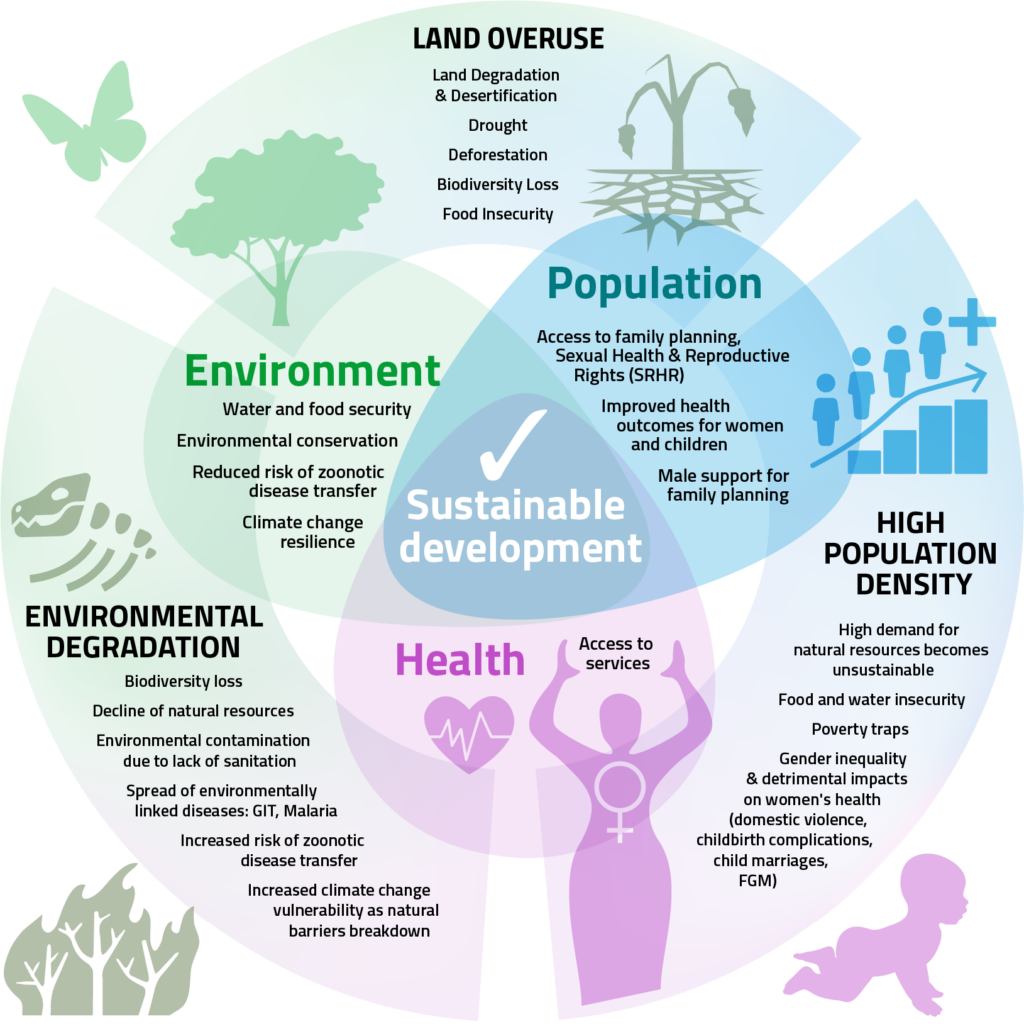
Population Matters has a campaign directed at the UK government to announce funding for PHE projects. You can support our ask here.
Read the full Dried Up Futures report here.


